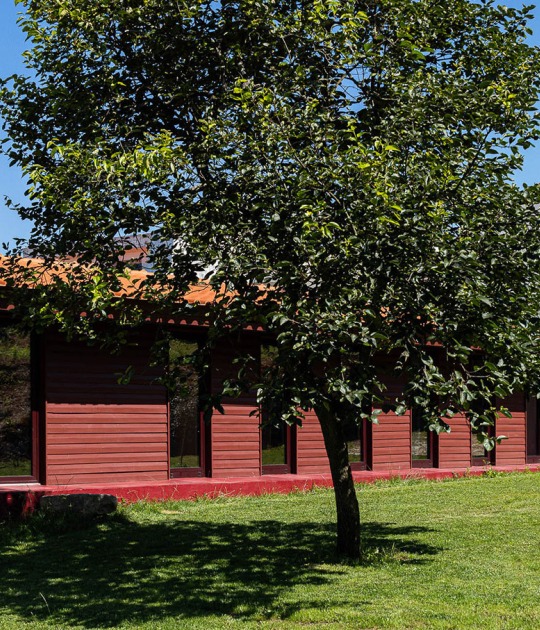The restoration of the upper exhibition hall alone, 1,600 square meter of new glass were installed, a new coating was applied to 15,000 square meter and 500 weld seams were renovated on the steel structure. 800 existing ceiling lights supplemented by LEDs, 196 ceiling grids and 2500 square meters of natural stone slabs made of Striegau granite were reinstalled after their conservation restoration. In total 35,000 individual components were removed from the building, with the majority restored and returned into their original positions.
The original planting was restored on the terrace and in the sculpture garden with the installation of Gleditschien and silver maples. At the same time, the first installation and commissioning of the building as well as the preparation of the urban environment, including the sidewalks, began.
Due to the Covid-19 pandemic, the key handover ceremony for the Neue Nationalgalerie has recently had to be postponed to April 2021. Its re-opening to the public is planned for August 2021.
Mies van der Rohe’s Neue Nationalgalerie is one of the icons of twentieth-century architecture. Inaugurated 15 September 1968, David Chipperfield Architects Berlin was appointed to refurbish the building in 2012.
Project description by David Chipperfield Architects
The Neue Nationalgalerie in Berlin’s Kulturforum is one of the icons of twentieth-century architecture. The only building realised by Mies van der Rohe in Europe after his emigration to the USA, the Neue Nationalgalerie has been dedicated to the art of the twentieth century since its opening in 1968. After almost 50 years, the damage, deficiencies and deficits of intensive use are to be carefully and sustainably addressed, within the restrictions imposed by the building’s status as a listed monument. The refurbishment and modernisation aims for maximum preservation of the existing fabric, with minimum visual compromise to the building’s original appearance.
In order to upgrade the services to current museum standards, the stone cladding and all the interior fittings were to be dismantled in 2015/16. Tens of thousands of original building components are being removed and restored, before being reinstalled in their precise original positions. The services being updated include air-conditioning, artificial lighting, security, and visitors’ facilities, including cloakroom, café and museum shop, as well as improving disabled access and art handling.
The key to the complex planning process for this project is finding a balance between the requirements of current museum usage and the importance of the Neue Nationalgalerie as a listed monument. Though the essential new interventions remain subordinate to the existing design of the building, they are nevertheless discreetly legible as contemporary elements. The refurbishment does not represent a new interpretation, but rather a respectful repair of this landmark of the International Style.







































